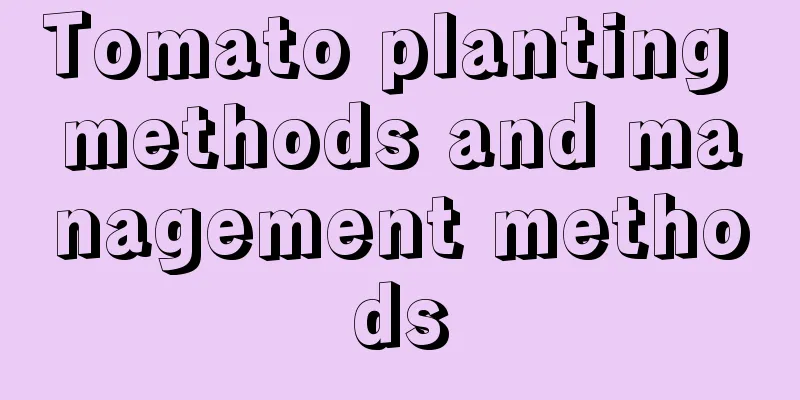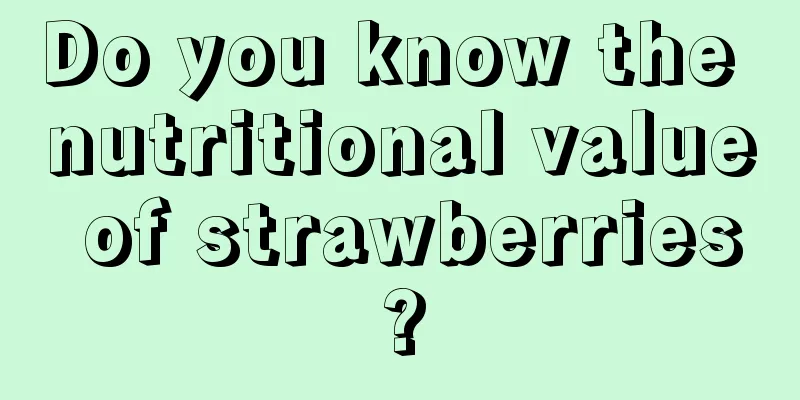Tomato planting methods and management methods

|
Tomato, also known as tomato, is a common vegetable. It has very high nutritional value, good taste and is very popular. Let’s learn about tomato planting and management methods. 1. Planting time The planting time in spring is generally from February to May, the planting time in autumn and winter is generally from July to September, and the planting time in winter and spring is generally from November to February of the following year. The climate and temperature in different regions vary, and the planting time can be adjusted appropriately according to actual conditions. 2. Site selection and land preparation Choose a plot of land with convenient irrigation and drainage, thick soil, and good ventilation as the seedling site, and then apply 3000-5000 kg of decomposed organic fertilizer , 20 kg of potassium fertilizer, and 25 kg of superphosphate per mu as base fertilizer. Plow the soil about 30 cm deep and then level it to make ridges. The ridge is about 80 cm wide, 16-24 cm high, and the ditch is about 33 cm wide. 3. Seed selection and soaking Choose high-quality seeds, soak them in clean water for 1-2 hours, then soak them in warm water at 50-60℃ for 15 minutes, stirring constantly. After the water temperature drops, continue soaking the seeds for 3-5 hours before sowing. 4. Planting seeds Sow seeds on the seedbed, with a seed dosage of 30 grams per square meter. Water appropriately after sowing to keep the soil moist. After sowing, control the temperature at 22-28℃ and it will germinate after about 3-4 days. 5. Planting When transplanting tomato seedlings, you should choose the appropriate time and weather conditions. It is usually carried out when the temperature is stable above 15℃, the ground temperature is above 10℃, and the weather is clear or slightly cloudy. Appropriate watering should be done before transplanting, and timely watering and fertilization should be done after transplanting to promote root growth and the growth and development of the above-ground parts. 6. Field management During the growth period of tomatoes, watering and fertilizing should be done in time according to growth needs to avoid excessive or insufficient water and fertilizer, so as not to affect yield and quality. At the same time, attention should be paid to the prevention and control of pests and diseases, and regular pest and disease monitoring and prevention measures should be carried out, such as spraying pesticides , herbicides and fungicides . Support management and pinching are also important links in tomato cultivation . Support management can make tomato plants grow stronger, promote ventilation and light, and increase yield and quality; pinching can control plant growth and promote fruit growth and development. That’s it |
<<: Why do gardenia buds fall off before opening?
>>: Common symptoms and treatments of cattle not eating grass
Recommend
A 20-year-old jade plant and a 30-year-old gardenia, growing flowers is a lifelong process!
30 Years of Gardenia (Author: I’ll kill you with ...
What to do if the rose leaves turn yellow from bottom to top
1. Replace the flower pot 1. Reason: For potted r...
The efficacy and function of iris
Function 1: viewing The iris has a dignified shap...
How to grow Buddleja
1. Maintenance conditions 1. Soil: Buddleja does ...
Drink some of this if you drink Christmas cactus, and 100 flowers will bloom in autumn, and the leaves will be so fat that they will drip oil!
If you grow it like this in early autumn, the Chr...
Photinia prefers shade or sun?
Photinia prefers shade or sun? Photinia fraseri i...
How to divide Aspidistra into pots and what are the time and method for dividing the pots
Time to divide the pot of Aspidistra When you wan...
How to propagate lilac by cuttings, when to propagate lilac by cuttings
1. Cut branches The branches chosen for lilac can...
Wintersweet pruning time and method
Wintersweet is a popular ornamental tree species ...
Is osmanthus suitable for indoor cultivation?
1. Is it possible? The answer is yes, and it is s...
How to make Cineraria bloom all year round
Artificially regulating the flowering period of C...
Thirty of the most beautiful "flowery" roads, a lifetime is not enough to walk
Flower shade all over the sky Like a dream (Autho...
How to change the soil and pot of banyan tree
The role and requirements of changing soil and po...
Once you plant this climbing flower, you’ll be addicted. You’ll never be able to fit so many of them in your yard!
Rose As soon as spring arrives, roses start to sp...
How many times a year does baby's breath bloom?
1. How many times does it bloom? When cultivated ...









